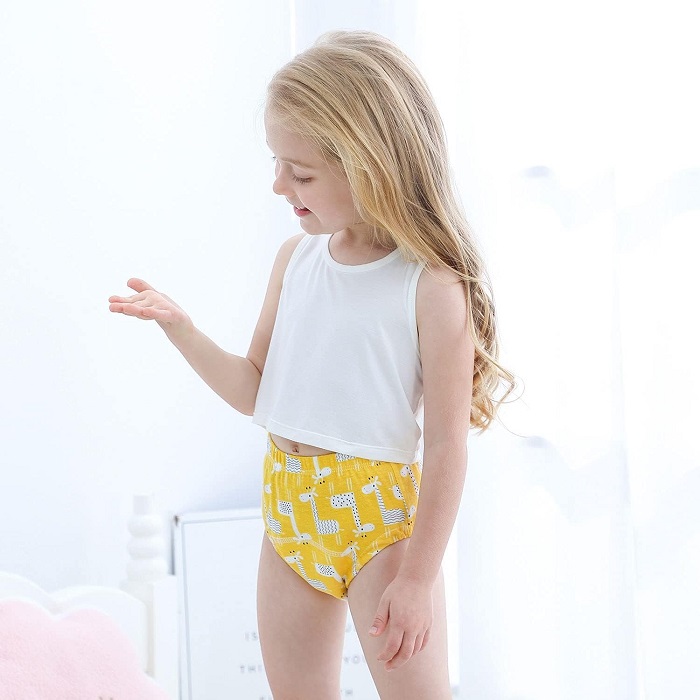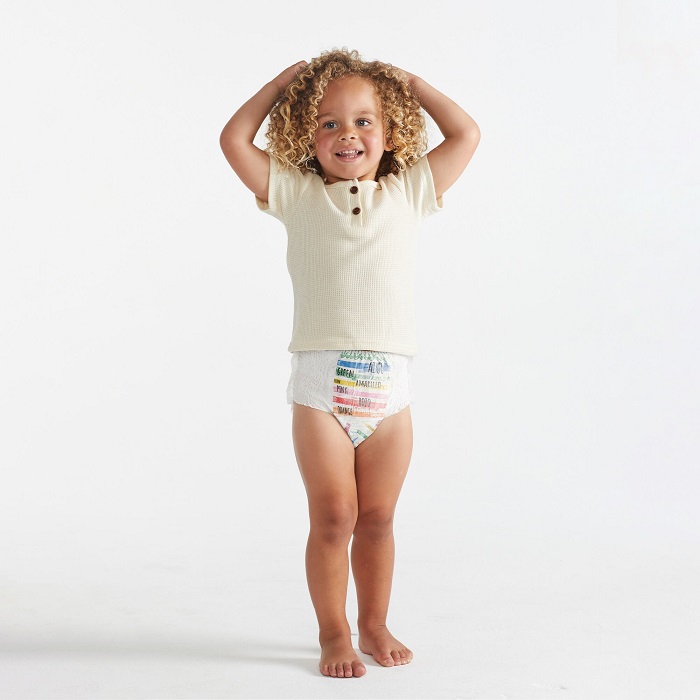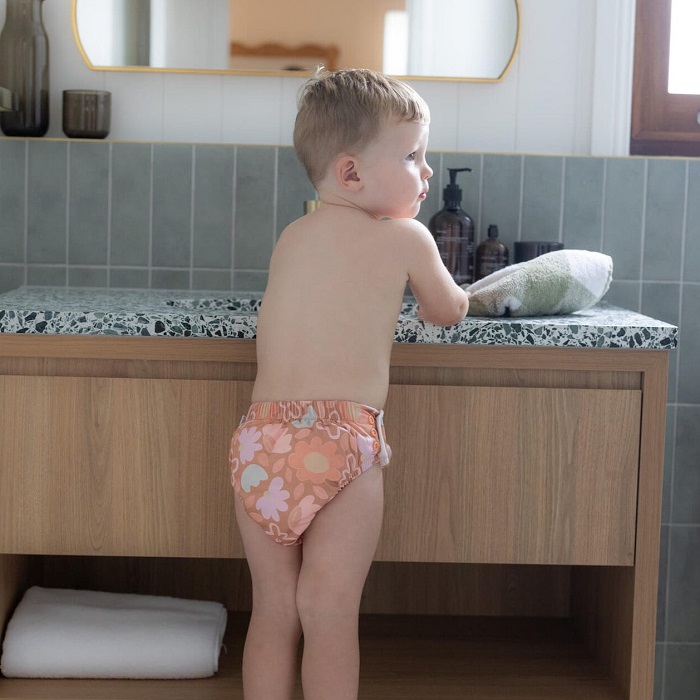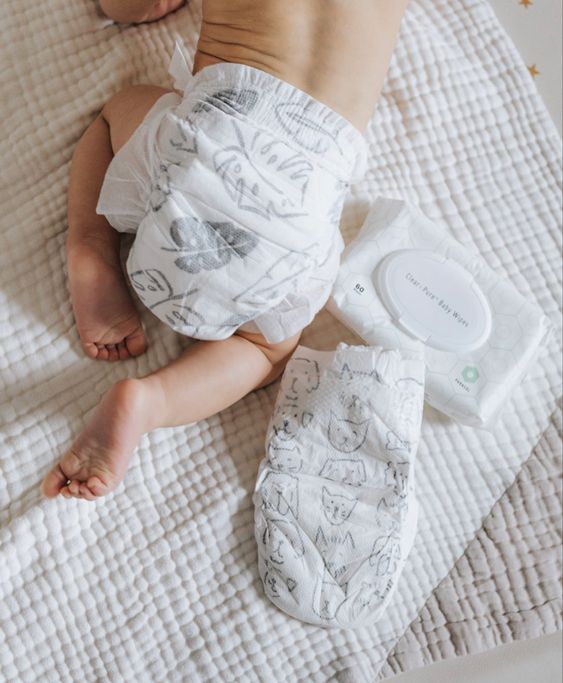Introduction to Potty Training Solutions
Potty training is a significant milestone for every toddler and parent alike. As they transition from diapers, choosing the right training solution becomes essential. Often, parents find themselves weighing the benefits of training pants vs pull-ups. Each option offers unique features and caters to different needs during the potty training process. Training pants are cloth-like and resemble underwear. Pull-ups, on the other hand, are more like diapers but pull up like underwear. Understanding these differences is crucial for making an informed decision that will align with your child’s comfort and your potty training goals. In the following sections, we will explore the variations, benefits, and factors to consider when selecting between training pants and pull-ups for your toddler.
The Differences Between Training Pants and Pull-Ups
When it comes to potty training, the choice between training pants and pull-ups plays a pivotal role in your toddler’s journey. Training pants are usually made of a cloth material and closely resemble regular underwear. They’re designed to allow toddlers to feel wetness, which can prompt them to use the toilet. A notable feature is that some training pants are reusable, making them an eco-friendly choice.
Pull-ups, in contrast, are much like diapers that have side fastenings to be pulled up or down easily. They are more absorbent than training pants and can handle more than one accident, which makes them convenient during nighttime or when going out. Unlike training pants, pull-ups are generally disposed of after use. Pull-ups also often come with tear-away sides to simplify removal during messy situations.
The main difference is how each option helps in the potty training process. Training pants encourage independence by allowing toddlers to pull them up and down like regular underwear, which can boost their confidence. Pull-ups, while also promoting self-reliance, focus more on preventing messes and are often used as a transitional product from diapers to full-time underwear.
Understanding these differences is crucial for parents to choose wisely between training pants vs pull-ups, based on their child’s needs and the specific circumstances of their potty training phase. Each has its benefits and understanding these can help ease the transition out of diapers.
Advantages of Training Pants for Toddlers

When choosing between training pants vs pull-ups, it’s important to understand the benefits of each. Training pants offer several advantages that make them a preferable choice for some families. Here are the key benefits of training pants for toddlers:
- Promote Independence: Training pants are similar to regular underwear. This similarity helps toddlers learn to pull them down and up on their own. Such actions build independence.
- Sensory Feedback: These pants allow toddlers to feel wetness. This feeling can teach them the signs of needing the bathroom.
- Eco-Friendly Option: Many parents prefer reusable training pants. These are washable and reduce waste, unlike disposable options.
- Cost-Effective: Over time, using washable training pants can save money. This is because they are used multiple times.
- Softer Materials: Typically, training pants are made from soft fabrics. These are less likely to irritate a toddler’s sensitive skin.
- Variety of Designs: Training pants come in fun designs. These designs can motivate toddlers to wear them and use the potty.
Considering the advantages of training pants can guide parents in making the best choice for their toddler’s potty training journey. Each benefit contributes to a positive learning experience during this important developmental stage.
Advantages of Pull-Ups for Potty Training
Pull-ups serve as a practical training tool for many parents and children. Here are some benefits they offer which can help in making an informed decision:
- Superior Absorbency: Pull-ups are highly absorbent. This feature is ideal for containing accidents, especially overnight.
- Convenience: They easily pull up and down. This makes bathroom trips and changes swift and less messy.
- Transition Aid: Pull-ups are a step between diapers and underwear. They can lessen the resistance some children feel when moving away from diapers.
- Leak Protection: Thanks to their design, pull-ups provide extra protection against leaks. This can reduce laundry loads and stress when not at home.
- Mobility Friendly: Toddlers can move freely in pull-ups. This encourages them to keep active without discomfort.
- Disposable: Pull-ups are thrown away after use. This can be handy for busy families or while traveling.
- Fun Designs: Many pull-ups come with colorful characters and patterns. These can be more appealing to toddlers and encourage them to wear them.
By considering these advantages of pull-ups for potty training, parents can better assess if they align with the needs of their toddler and the practicalities of their potty training situation.
Factors to Consider When Choosing Between Training Pants and Pull-Ups
When deciding between training pants vs pull-ups, several factors come into play. These considerations revolve around your toddler’s specific needs, your daily routine, and the ultimate goals of potty training. Let’s delve into the main factors that should influence your decision-making process.
- Your Child’s Readiness: Look at your child’s potty training readiness signs. If they show a keen interest in using the toilet and have started recognizing the sensations associated with needing to go, training pants might be the better option to enhance their learning experience.
- Your Lifestyle: Consider your daily activities. If you’re often on the go, pull-ups might offer the convenience you need. On the other hand, if you’re able to manage frequent changes, training pants could work well.
- Nighttime Use: For overnight use, absorbency is key. Pull-ups tend to offer better protection against leaks, which can mean more sleep for everyone.
- Environmental Considerations: Think about the environmental impact. Reusable training pants are more eco-friendly compared to disposable pull-ups, which add to landfill waste.
- Cost Implications: Budgeting is important. Training pants can be washed and reused, which might reduce costs over time. However, pull-ups offer convenience but at a higher ongoing cost.
- Independence Level: Assess how much independence your toddler craves. Training pants encourage toddlers to learn the pull-up-and-down motion similar to underwear, promoting self-sufficiency.
- Sensitivity to Wetness: Determine if feeling wetness would benefit your child’s training. Training pants allow for this natural cue to use the potty, whereas pull-ups might mask the sensation due to their higher absorbency.
Weighing these factors will help guide you to the choice that suits your toddler’s unique potty training journey. Keep in mind that each child is different, and what works for one may not work for another. Balancing practicality with your child’s comfort and learning should lead you to the right decision between training pants and pull-ups.
Transitioning From Diapers: What’s Best for Your Child?

Moving from diapers to the next step in potty training is a big change for toddlers. The decision on whether to use training pants or pull-ups can be tough. As a parent, you want what’s best for your child’s comfort and confidence. Here’s a brief guide to help you decide.
Readiness for Change
Check if your child is showing signs they’re ready to move on from diapers. These may include staying dry for longer, telling you when they need to go, or even asking to use the potty. If they’re showing these signs, it might be time to make the switch.
Consider Comfort and Convenience
Think about what will be more comfortable for your child. Training pants feel more like real underwear, which some kids prefer. Pull-ups are great for kids who aren’t yet ready to fully commit to training pants. They also work well for outings or overnight.
Assess the Learning Curve
Think about how each option can help your child learn. Training pants may teach them about wetness and using the toilet on time. Pull-ups can prevent messes, which can ease everyone’s frustration.
Look at Your Routine
Your daily routine plays a big part in your choice. If you’re often on the move, pull-ups might be more practical. If you have more flexibility, training pants could encourage your child to use the potty more.
Sustainability Matters
If being eco-friendly is important to you, consider reusable training pants. They can be a more sustainable choice over the disposable pull-ups. Plus, they reduce waste and can be cost-effective in the long run.
Finally, remember that each child is different. What works for one may not work for another. Try not to rush the process and be open to trying both options. This way, you can see what works best for your child’s individual needs and potty training success.
How to Use Training Pants Effectively During Potty Training
Transitioning a toddler from diapers to toilet training is a delicate task. Training pants can be a helpful tool. To maximize their effectiveness, it’s essential to use them properly. Here are some valuable tips for using training pants during potty training:
Introduce at the Right Time
Begin when your toddler shows interest in the potty. Training pants work best when your child is ready for potty training. Patience is key. Wait for clear signs that they understand what the potty is for.
Encourage Awareness
Encourage your child to recognize wetness. Training pants promote awareness, unlike diapers. Explain to them how they feel different when wet and the importance of staying dry.
Stick to a Routine
Set a potty schedule. Consistency helps children learn faster. Ask them to try the potty at regular intervals, and praise them for their efforts regardless of the outcome.
Offer Praise and Support
Celebrate small victories. Praise helps build confidence in your child’s potty abilities. Positive reinforcement goes a long way. Give hugs or claps when they successfully use the potty.
Teach Proper Use
Show your toddler how to pull the pants up and down. This step fosters independence and mirrors real underwear use. Providing easy clothing can simplify this learning process.
Be Prepared for Accidents
Expect mishaps and have a calm reaction to them. Keep extra training pants handy for quick changes — plan for setbacks.
Avoid Nighttime Use Initially
Begin with daytime use. Training pants are less absorbent and might not withhold nighttime accidents. Gradually introduce them at night as your child’s control improves.
By focusing on these methods, you’ll create a supportive environment that can help your toddler feel empowered and successful in their potty training journey. Through patience and consistency, you’ll find the transition from diapers to training pants, and eventually to regular underwear, can be smooth and encouraging for both you and your child.
Tips for Success with Pull-Ups

Using pull-ups effectively can make potty training smoother for both toddlers and parents. Here are some tips to ensure you make the most of using pull-ups:
Choose the Right Time
Introduce pull-ups when your child shows readiness for potty training but still needs protection from accidents. Transitioning too early or too late can hinder the learning process.
Make Them Fun
Select pull-ups with fun designs or characters. This can make wearing them exciting for your child, which can motivate them.
Practice Pulling Up and Down
Encourage your toddler to pull the pull-ups up and down on their own. This practice fosters independence and prepares them for regular underwear.
Set a Schedule
Maintain a routine for bathroom breaks. Regular attempts can help your child recognize the need to go and use the pull-ups less over time.
Use for Outings and Overnight
Pull-ups are perfect for trips and bedtime. Their extra absorbency can prevent leaks and provide peace of mind when you’re not close to a bathroom.
Explain the Change
Help your child understand why they’re moving from diapers to pull-ups. Clear communication can make them feel more involved and cooperative in the potty training journey.
Stay Positive
Keep a positive attitude towards accidents. A reassuring response helps your child feel that it’s okay to make mistakes while they’re learning.
By keeping these tips in mind, pull-ups can be a valuable tool in your toddler’s transition out of diapers, complementing the potty training process with convenience and confidence-building.
Conclusion: Making the Right Choice for Your Toddler’s Potty Training Journey
Choosing between training pants and pull-ups is a critical step in your child’s potty training. It can shape their comfort and confidence during this phase. Training pants boost independence and help toddlers notice when they’re wet. Pull-ups offer security against leaks, especially when you’re out or at night.
Think about what works best for your lifestyle and your child’s needs. Consider their readiness to potty train, your daily schedule, and the importance of nighttime protection. Don’t forget the impact on the environment and your budget.
Remember, there’s no one-size-fits-all solution. Some children do better starting with training pants, others with pull-ups. Observe your child’s response and be ready to switch if necessary. With patience and encouragement, your little one will master potty training. Use the tips and information shared to make a choice that supports your child’s journey to becoming diaper-free.




